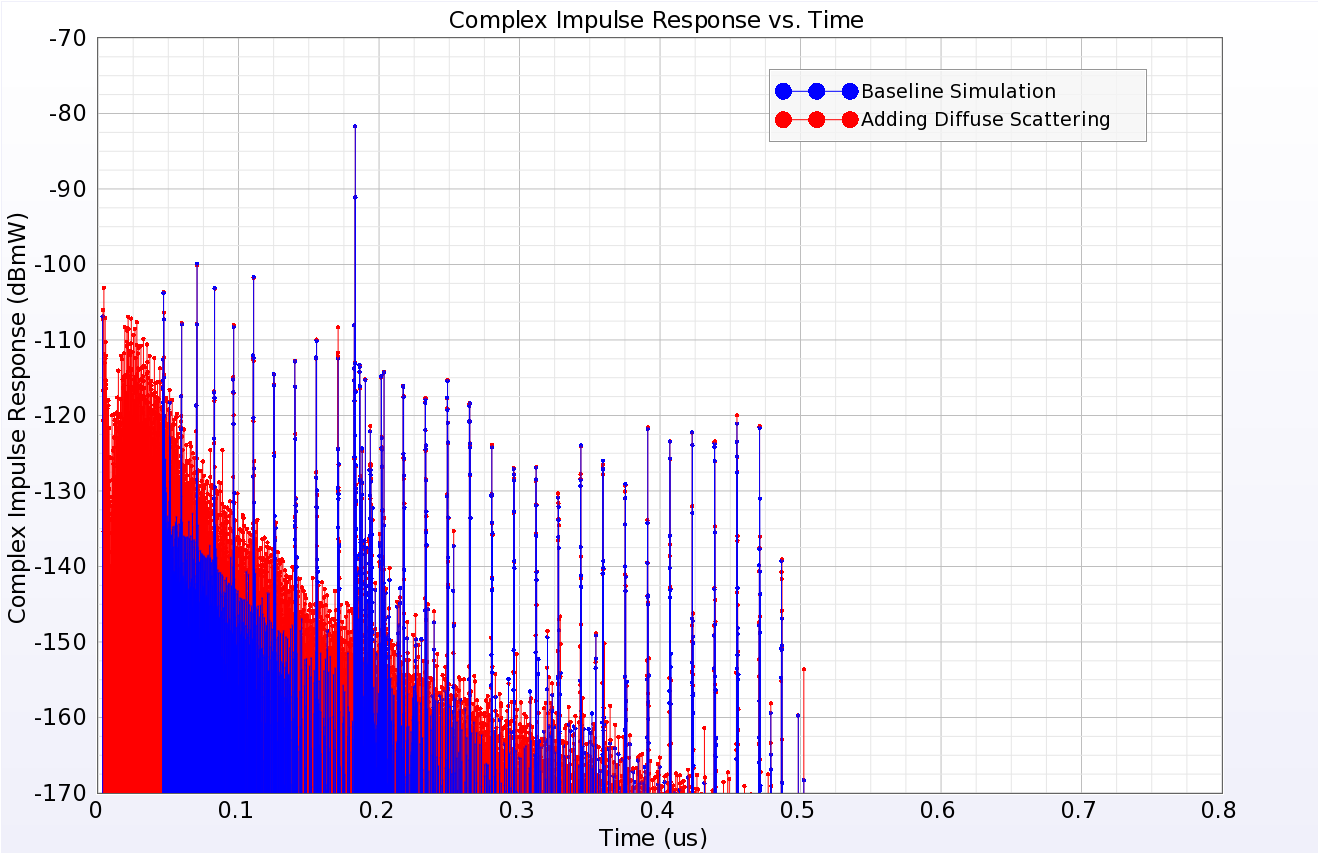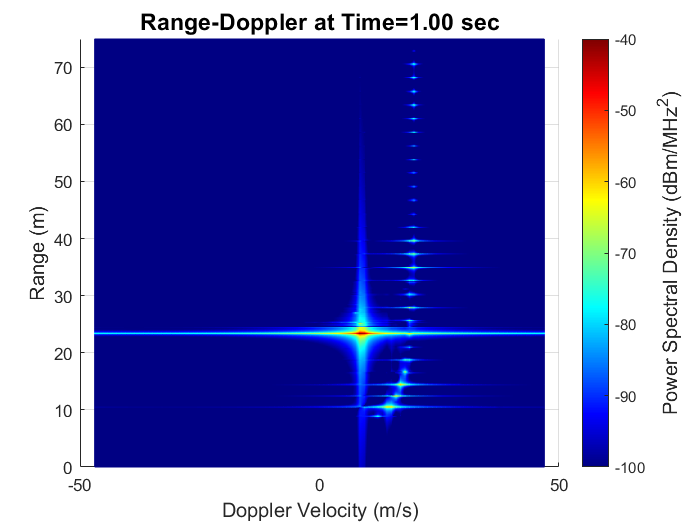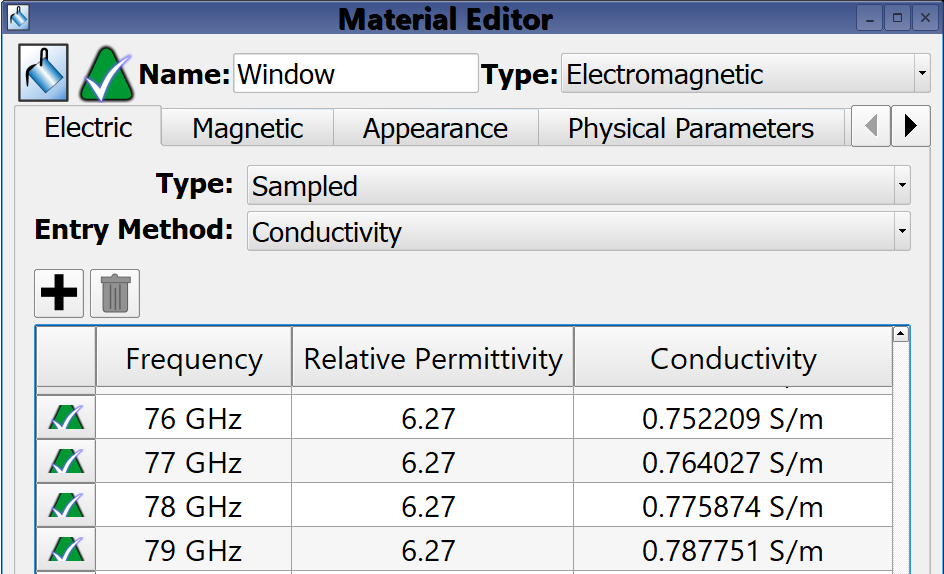December 3, 2020: The content below helps navigate the new features in this release. A full list of updates is available in the the Reference Manual's Appendix.
Diffuse Scattering

WaveFarer's diffuse scattering capability captures clutter caused by rough surfaces, such as roads, walls, and objects with roughness smaller than a wavelength. Users can incorporate key effects, such as the impact on complex impulse response and increased cross-polarization of received signals, into results from radar scattering simulations.
Transmissions
This release of WaveFarer includes transmission through materials, allowing simulations to include loss from transmission through a wall, window, or bumper, as well as multipath from interactions with structures on the far side.
Range-Doppler Script

This package of WaveFarer scripts and utilities assists users with setting up and executing linear chirp simulations and post-processing results in order to generate range-doppler plots. These tools utilize new path outputs for a highly-optimized approach to generating results for snapshots that represent frames containing sequences of chirps, and apply standard analysis methods to such results in order to generate power versus range and range-doppler plots for a series of simulated snapshots in time. The scripts also generate optional outputs, such as the complex impulse response or S-parameters as a function of frequency over the chirp bandwidth.
Output Types
Extended WaveFarer simulation outputs provide new insight into the angular spread of returns and the propagation paths.
- Power vs. angle of arrival
- Power vs. angle of departure
- RMS angle spreads, delay spread, and path loss and gain
- Detailed propagation paths
Users can view propagation paths by calling Remcom’s XGtd® graphical user interface from a WaveFarer script.
Material Updates

Users can specify both electric and magnetic properties as a function of frequency, providing added flexibility when defining scenarios for simulation across multiple frequencies. Additionally, extended materials allow multi-layered materials, magnetic materials, and several special material types, including perfect absorbers, free space (either air or vacuum), and materials defined by constant coefficients. The library distributed with WaveFarer utilizes this feature by including common materials populated for frequencies between 100 MHz and 100 GHz.
Additional Capabilities
There are several usability, performance, scripting, and other updates in this version.
Here is a select list of modifications:
- Reduced processing time for large-facet models.
- Added geometry caching that allows pre-processing of geometry for use in subsequent simulations.
- Increased control over faceted surface resolution with additional options.
- Eliminated duplicate and zero-area facets from facet models for efficient geometry processing.
- Improved multiple sensor and array results organization during Matlab data export.
- Resolved an issue causing high-power returns from double-diffraction paths across high-conductivity materials.
- Resolved several minor issues concerning usability, simulation execution, and plotting results.


